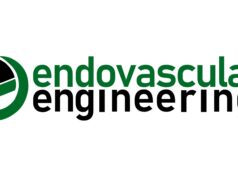
Manjit Gohel (Cambridge, UK) and Stephen Black (London, UK) write that several recent advances in the management of venous thromboembolism (VTE) have provided clarity and consensus on this important topic. However, they stress that areas of controversy remain.
VTE has long been recognised as a major and preventable cause of morbidity and mortality. While the mortality may be easy to measure, long-term morbidity from post-thrombotic syndrome is likely to be massively under-reported. Despite the high volume of research activity in this field for many decades, advances have been slow.
However, there have been some important, up-to-date advances in this field. Large studies have provided much-needed clarity on the role of anticoagulation in high-risk and moderate-risk patients with COVID-19. Other reasons for celebration include recent consensus in guidelines on superficial vein thrombosis (in the European Society for Vascular Surgery venous thrombosis guidelines)1 and further agreement on the management of endothermal heat-induced thrombosis (EHIT) in new joint guidelines from the American Venous Forum and Society for Vascular Surgery.2 These important publications should provide greater consistency of care. However, areas of controversy remain, not least the debates regarding early thrombus removal for acute lower extremity and upper extremity deep venous thrombosis (DVT). Guidelines have suggested a selective approach to intervention, carefully balancing risks and benefits for individual patients. The key to better selection is the ability to predict which patients are at greatest risk of developing significant post-thrombotic syndrome. While the published trials have been lukewarm in their support for aggressive thrombus removal, technology is advancing constantly. It is entirely feasible that improved technical success with novel thrombus removal approaches, combined with appropriate stenting of underlying venous obstruction will translate into better medium and long-term outcomes.
Finally, it is entirely appropriate that Joseph Caprini was recently awarded a Venous Lifetime Achievement Award at the recent Charing Cross (CX) 2021 Digital Edition (19–22 April, online). Over many decades, Caprini has highlighted the importance of appropriate risk assessment for the prevention of VTE, which has undoubtedly resulted in the prevention of countless deaths. As clearly articulated by Caprini in a recent interview, the process of VTE risk assessment is evolving and researchers need to build on his ground-breaking work to further refine risk assessment to provide even more accurate and patient-centred prevention strategies.
References
- Kakkos SK, Gohel M, Baekgaard N, et al. Editor’s Choice – European Society for Vascular Surgery (ESVS) 2021 clinical practice guidelines on the management of venous thrombosis. Eur J Vasc Endovasc Surg 2021;61:9–82.
- Kabnick LS, Sadek M, Bjarnason H, et al. Classification and treatment of endothermal heat-induced thrombosis: Recommendations from the American Venous Forum and Society for Vascular Surgery, co published in Journal of Vascular Surgery and the Journal of Phlebology. J Vasc Surg Venous Lymphat Disorder and Phlebology 2020. In press.
Manjit Gohel is a consultant vascular and endovascular surgeon at Cambridge University Hospitals in Cambridge, UK.
Stephen Black is a consultant vascular surgeon at Guy’s and St Thomas’ Hospital NHS Foundation Trust and professor of Venous Surgery at Kings College Hospital in London, UK.









